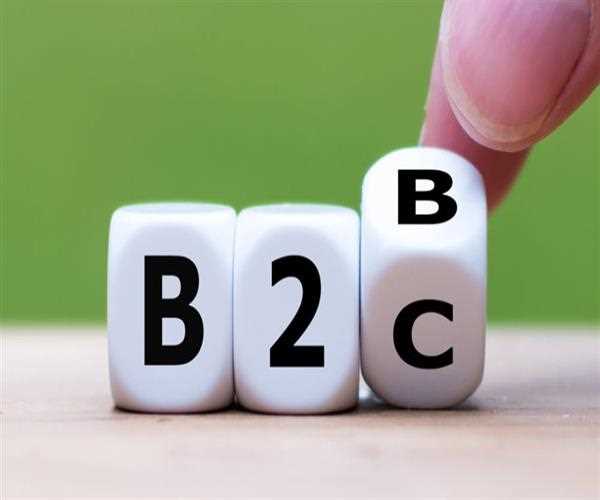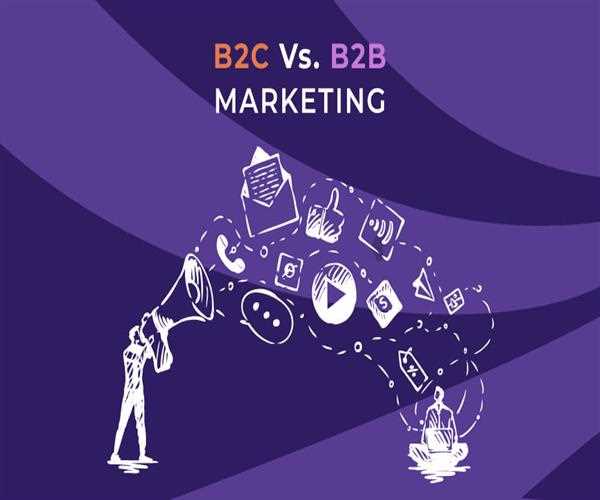Search here

24-Sep-2024 , Updated on 8/13/2025 11:11:38 PM
B2B Vs B2C: 10 Differences
Comprehending the roles of B2B and B2C marketing is fundamental in the process of creating successful marketing and sales strategies. This guide also examines ten aspects of the two business approaches: the target market, buyer behavior, and selling strategies. Through such differentiation, a business can strategically reposition itself to achieve maximum outcomes about customer engagement as well as profitability. Such a comparison analysis will afford a further understanding of the specific nature of the opportunities that the B2B and B2C strategies might offer for different business objectives.
B2B vs B2C: 10 Differences
1. Target Audience
- B2B: Businesses who are selling their products to other businesses. The emphasis is on adding value to the scope of the whole organization which is why it is mandatory to be aware of the company’s objectives and visions as well as your position in this system.
- B2C: Companies that sell their products for immediate consumption by the end users. KAV is based on individual needs, choices, and feelings. Marketing by its general nature tends to be broader and targeted to appeal to a wide range of customers.
2. Decision-Making Process
- B2B: The procurement process takes more time and it includes many functional buying areas that entail different buying variables such as managerial and executive-buying criteria. The decision-making is formal and the decision criteria include the rate of return, the cost of capital, and the business value.
- B2C: Decisions are also generally faster and can be made by an individual who acts in his/her self-interest, influenced by passion. The delivery process could be a result of consumer behavior that is reflexive and part of social influence, which may be caused by persuasive advertisement and as a result of word of mouth.

3. Sales Cycle
- B2B: The sales cycle has to be longer and requires more effort due to assessments, lengthy discussions, proposal preparation, price negotiations, and more approval levels. That’s why it is essential to focus on relationships and creating trust.
- B2C: They are shorter with an average of one call per sale or in some cases market exclusively. It is easier for consumers to come up with decisions quickly whenever there is an urge or necessity to do so.
4. Marketing Strategies
- B2B: Dissects articles centered on content marketing, white papers, case studies, as well as webinars that inform potential clients. LinkedIn is an important medium for Business-to-Business marketers.
- B2C: Depends mainly on emotive appeal, social networks, and word of mouth, and influencers. These include Facebook, Instagram, and TikTok among others to get in contact with the consumers.
5. Customer Relationships
- B2B: People form long-term commitments mainly through trust, dependability, and continuous association with one another. In this instance, customer retention and satisfaction are the major goals that need to be achieved.
- B2C: Emotional interdependence is not deep and is mostly short-term and based on exchanges. While there is a tradition to rely on brand awareness and encourage consumers’ multiple repurchases, there is even more emphasis placed on constant and as frequent as possible customer acquisition.

6. Content Strategy
- B2B: It is more informative, concentrates on field specialization, and frequently incorporates figures, examples, and opinions of professionals. The purpose is to show that you’re thinking about it and to build the necessary trust levels with the recipient.
- B2C: It is being said that content is more engaging, entertaining, and relatable to broader audiences. It is designed to increase brand loyalty and usually, it is produced with consideration of shareability and viral potential.
7. Pricing Models
- B2B: It is usually not straightforward and depends on the quantity, conditions of the agreement, and service levels respectively. Coupons and quotes are quite often.
- B2C: It is also significantly inexpensive with loyal packages being priced at a fixed cost. Hence while bonuses and coupons are used to attract customer attention, the pricing strategies are sneakily and are fully standardised.
8. Branding Focus
- B2B: Branding targets the stability of the business and specialization in the industry, together with how the products or services provided bring solutions to business challenges. The key idea is to strengthen the concept of a corporate brand.
- B2C: Branding is a concept that seeks to make people have a favorable attitude towards the brand. It turns its attention to the possible behavior, beliefs, and goal orientation that are appealing to the specified target market segment.

9. Communication Style
- B2B: Communication is business-like, driven using information, and is centered on providing value to business. This often includes general terms and abbreviations known to people in practice within the field.
- B2C: It is more assertive, relaxed, and interactive, and the messages that are built appeal to the person’s emotions. They seek to give consumers a familiar and approachable brand associated with them.
10. Customer Feedback and Adaptation
- B2B: Feedback is also obtained through surveys, interviews, and direct communiqué with the clients. They use it to extend to clients personalized products and services.
- B2C: Some of the feedback is collected through surveys, websites, and customers’ complaints & queries. It is used in enhancing product portfolios and customer experience across the range of products.
Conclusion
The methods also have their problems and prospects when buying and selling between businesses and consumers. It is very important to comprehend those distinctions to be able to apply the marketing strategies and sales techniques that would prove beneficial for the company. Regardless of whom it is you are marketing to businesses or individual consumers it is always best to match your marketing strategy with the behavior of these groups and their expectations.

Student
Being a professional college student, I am Shivani Singh, student of JUET to improve my competencies . A strong interest of me is content writing , for which I participate in classes as well as other activities outside the classroom. I have been able to engage in several tasks, essays, assignments and cases that have helped me in honing my analytical and reasoning skills. From clubs, organizations or teams, I have improved my ability to work in teams, exhibit leadership.
Comments
Join Our Newsletter
Subscribe to our newsletter to receive emails about new views posts, releases and updates.
Copyright 2010 - 2025 MindStick Software Pvt. Ltd. All Rights Reserved Privacy Policy | Terms & Conditions | Cookie Policy